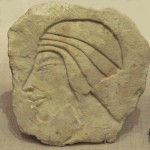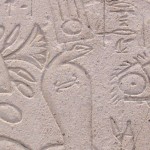
Meretseger: She Who Loves Silence. The Cobra Deity at Deir el-Medina
In the Western world the cobra rarely inspires sentiments of benevolence, warmth or good intentions. It is not a cuddly beast. Matters were more ambivalent in ancient Egypt where a range of wild animals were identified with deities imbued with admired values of physical strength, protection and courage, as well as less obviously admirable qualities like aggression, retribution, vengeance and retaliation. Like Sobek, the crocodile deity, and Sekhmet the lioness, the cobra deities comprised a mixture of attributes that centred on their fierce ability to defend themselves and to strike, hissing and spitting poison, to annihilate their aggressors. [more…]
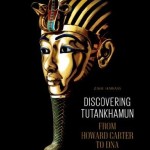
Book Review: “Discovering Tutankhamun – From Howard Carter to DNA” by Zahi Hawass
It is now some while since Zahi Hawass was finally ousted from office as Secretary General of the Supreme Council of Antiquities, following the fall of the Mubarak government in 2011; but his absolute ubiquity on TV programmes concerning ancient Egypt prior to that date (and the fact that these are repeated endlessly on various satellite/cable and terrestrial channels) means that there is little chance of any reader being unaware of his ebullient and bombastic presence. That presence is now reduced to occasional lectures about his former exploits, and adding to the series of published books that bear his name – of which this is the latest. [more…]
Edition - March, 2014
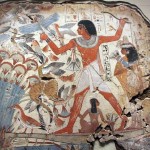
The paintings from the lost tomb-chapel of Nebamun
The paintings from the tomb of Nebamun are justifiably famous for their beauty and incredible dynamism. The British Museum purchased the panels that it has in 1821 . They were located by a Greek tomb robber named Giovanni d’Athanasi, who worked as an agent for Henry Salt in Luxor. Unfortunately d’Athanasi was angered by the finder’s fee offered and he refused to give up the location of the tomb from where the panels had been removed. The location of the chapel remains unknown to this day. [more…]
Edition - November, 2012
Review of Tutankhamun and the Golden Age of the Pharoahs: A Souvenir Book
Published in Egyptological, In Brief, November 14th 2012. By Kate Phizackerley There is an official companion book to the exhibition and this souvenir book, a small format volume of 64 pages. At 15.5cm by 15.2cm (about 6”) it is oddly not quite square. It is easily available for one penny (or one cent) second hand […] [more…]

Pleasant living in Amarna
Many houses have been excavated in Amarna over the last century. More than five hundred houses were the subject of studies, one of which was how climate was controlled inside buildings. In this article I will describe some of this research. In present-day Egypt the temperature in summer can easily reach 40 degrees Celsius. At night the thermometer gives much lower values. This big difference in diurnal temperatures is one of the characteristics of the desert climate. Other important aspects are the humidity of the air and the low rainfall. These principles are also applicable to the time of the Pharaohs, as modern scientific research has demonstrated. [more…]
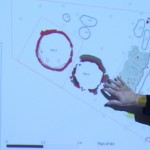
Overview: The Gurob Harem Palace Project Conference
The Gurob Harem Palace Project (http://www.gurob.org.uk), directed by Dr Ian Shaw from the University of Liverpool is collaborative, led by the University of Liverpool, University of Copenhagen and University College London. The conference took place on July 29th 2012 in Liverpool. Originally named Mer-Wer, today’s name derives from the nearby Medinet el-Gurab. It was investigated by a number of previous excavators including Flinders Petrie, William Loat and Guy Brunton before coming, for many years, under military control. The Gurob Harem Palace Project started work at the site in 2005, and their work is ongoing. [more…]
Edition - April, 2012
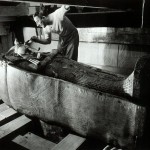
Comparative Book Review: The Discovery of Tutankhamun’s Tomb and Tutankhamun’s Tomb: the Thrill of Discovery
Kate Phizackerley compares and contrasts two books: The Discovery of Tutankhamun’s Tomb (1976) and Tutankhamun’s Tomb: the Thrill of Discovery (2006), both published by the Metropolitan Musuem of Art and both showcasing Harry Burton’s photographs of Tutankhamun’s tomb. She identifies that both have particular strengths and weaknesses. [more…]
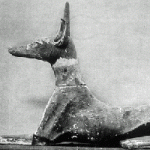
Introduction to the Contents of Tomb KV57 (Horemheb)
KV57, Horemheb’s royal tomb in the Valley of the Kings is famous for its bright decoration but it has yielded a large number of artefacts. The tomb has been excavated twice by Theodore Davis after he discovered the tomb in 1908 and a century later by Geoffrey Martin. This paper brings together findings of both excavations to show that the tomb originall contained an assemblage matching or surpassing that found in KV62, the tomb of Tutankhamun [more…]
 By
By 